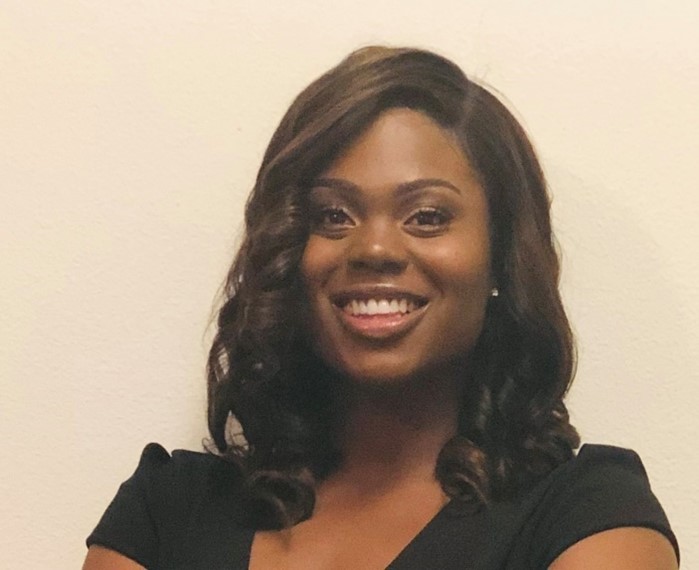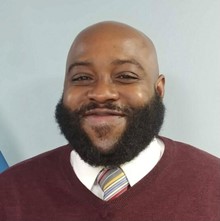Throughout Black History Month, we are taking time to honor African American FEMA employees who help make our nation safer, stronger and more prepared. Through their service, these colleagues are bringing much-needed energy to help our work align with FEMA’s Strategic Plan and the ideals of our nation.
This week, we asked three employees to share more about their role at FEMA and the work they do to ensure that FEMA is equitable when we help people before, during and after disasters.
Antionette Fowlkes
Hazard Mitigation Community Planner Crew Leader

What is your role at FEMA?
My role is to partner with communities to help them understand what hazard mitigation is, provide guidance when applying for hazard mitigation grants, and educate community members on various mitigation opportunities that they can implement to reduce loss of life and property from disasters.
What is some work you have done during your time at FEMA that you’re particularly proud of?
I am most proud of the work that I was able to do while working as a direct technical assistance team member to the Building Resilient Infrastructure and Communities (BRIC) grant program. I had the opportunity to work alongside a tribal government in California as they prepared to apply for a hazard mitigation grant. I am proud of the relationships that my teammate Melissa Baker and I were able to build while working with the tribal government. Last, I am most proud of being able to help create clarity for community members as they navigated the Hazard Mitigation Assistance BRIC grant process. I learned so much from that deployment and hope to continue working with communities in building their capability and capacity as it relates to hazard mitigation planning.
What is the most fulfilling/rewarding thing about working with FEMA?
The most-fulfilling thing about working with FEMA is meeting such amazing people. When working with FEMA, you meet some of the most amazing people! When I meet people, I see them as doors. I see people as doors because they may be a doorway that may unlock new understanding on a particular topic. No matter what may be behind that door, I believe that there is much to learn from the person in front of you. Who knows, you may learn that the individual once worked for Burning Man or spearheaded a project on macro plastic down in Louisiana. The possibilities are endless! I can say that the people that I have met during my first year here at FEMA both internally and externally have helped me to see and understand the bigger picture of the work that we do.
What role do we play at FEMA, in making sure that equity is always our focus, and that no community is left behind in disaster preparation, response and recovery?
The role that I play at FEMA in making sure that equity is always our focus, and that no community is left behind in disaster preparation, response and recovery is through education. As a Hazard Mitigation Community Planner, I help communities ensure that the hazard mitigation planning process and outcomes of the mitigation plan benefit the whole community. In doing so, we make sure that equity is central in the development process.
Inclusive planning processes take time and thoughtful planning so that they are set up in a way that provides everyone with the resources necessary to meaningfully participate, make progress and benefit from hazard mitigation. Equity is not just an important principle; it is essential to reducing risk to the whole community, particularly for those who face barriers to accessing assistance and for populations that are disproportionately affected by disasters. The whole community includes individuals and communities, the private and nonprofit sectors, faith-based organizations and all levels of government. The work that I do alongside communities as a hazard mitigation community planner is an opportunity to help counter some of those barriers and intentionally plan for reducing the risk of all communities.
Alvin Rodney
Federal Insurance and Mitigation Administration, Assistant Reservist Program Manager, Program Support Specialist

What is your role at FEMA?
I serve the Hazard Mitigation Management Cadre and the Cadre’s field leadership; as front office support for special projects, training, timekeeping and equipment needs.
In the last year, one of my greatest accomplishments was supporting the Federal Insurance and Mitigation Administration (FIMA) Incident and Mitigation Readiness Division Cadre Management in establishing a staffing foundation and administrative support framework for the Building Resilient Infrastructure Communities (BRIC) Direct Technical Assistance (DTA) model. The DTA helps give full support to communities that may not have the resources to begin climate resilience planning and project solution design on their own.
What is the most fulfilling/rewarding thing about working with FEMA?
The most-rewarding aspect is the genuine smile or thanks daily from internal customers who you know ultimately serve the external nation. We are truly, “rubber meets the road.”
What role do we play at FEMA, in making sure that equity is always our focus, and that no community is left behind in disaster preparation, response and recovery?
We play a vital role in ensuring no person is left behind when it comes to job skills placement, and we must have the patience to instill equity and a long-term knowledge bases within communities going forward. The goal of capacity takes time!
Brooks King
Field Coordinator for Housing Inspection Service

What is your role at FEMA?
My role at FEMA is to help ensure smooth implementation of the Housing Inspection Services Disaster Recovery Program. My team inspects homes after disasters to help determine the assistance we need to provide to survivors.
Outside of FEMA, I also serve in the United States Army National Guard, where I help care for the basic supply, armory and vehicles needed for drills and deployment.
What is a project you’ve completed at FEMA that you’re particularly proud of?
One of the important projects that I have competed is training new field inspectors on the aspect of being an inspector. I think that is always most important sharing the knowledge that you have learned over the years. It is incredibly rewarding to watch new inspectors gain confidence and put their training into practice by serving the community and helping those in need.
What is the most fulfilling/rewarding thing about working with FEMA?
The most-rewarding part of being a FEMA Inspector is providing disaster survivors with a sense of hope and helping them through the disaster recovery process. Additionally, I believe that my role in the organization helps to build social capital for FEMA, demonstrating to the community that we are here to assist and we care. This involves being present in the community and creating a support system that can be relied upon before and after disasters.
What role do we play at FEMA, in making sure that equity is always our focus, and that no community is left behind in disaster preparation, response and recovery?
At FEMA, we play an important role in ensuring that equity is always our focus, and that no community is left behind in disaster preparation, response and recovery. This involves providing resources and support to all communities, regardless of their size or location, and making sure that everyone has access to the same level of assistance. Additionally, we strive to ensure that all communities have the same level of preparedness and are equipped with the necessary resources to respond to and recover from all disasters.
Visit the federal Black History Month website to learn more about the 2023 celebration of African American achievement.


